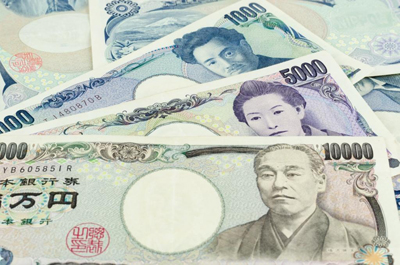 On the 17th of August the Japanese Government announced that the world’s third largest economy had decreased by 1.6% in Q2 thus supporting the grim scenario that the annual growth of the economy would fail to reach 1% in 2015. Moreover, many experts have voiced their doubts whether the Japanese government will be able to revive the stagnating economy any time soon. As the Government seeks to bring its primary budget into a surplus via reforming the local tax system by the end of the decade, the process may end up killing a niche aircraft finance product known little outside the industry – the Japanese Operating Lease (JOL).
On the 17th of August the Japanese Government announced that the world’s third largest economy had decreased by 1.6% in Q2 thus supporting the grim scenario that the annual growth of the economy would fail to reach 1% in 2015. Moreover, many experts have voiced their doubts whether the Japanese government will be able to revive the stagnating economy any time soon. As the Government seeks to bring its primary budget into a surplus via reforming the local tax system by the end of the decade, the process may end up killing a niche aircraft finance product known little outside the industry – the Japanese Operating Lease (JOL).
JOL is a successor to the Japanese Leveraged Lease (JLL) – a popular finance tool back in the 80-90’s offering airlines from around the world access to relatively cheap funds. Japanese investors used to provide at least 20% of the equity in a special purpose vehicle (SPV). The SPV would in turn act as the owner and lessor of the asset. Meantime, investors would also enjoy tax exemptions on their investment.
Following tax reforms in the late 1990, JLLs available were limited to local airlines only. However, a new solution for foreign carriers was soon developed in the form of JOL and JOL with a call option (JOLCO). The structure of both tools is rather similar – an SPV is established with a 100% ownership by a Japanese entity (equity arranger). 20-30% of the SPV’s equity is provided by Japanese equity investors while the remainder comes from lenders (banks). The latter is also expected to provide funds through its local Japanese offices.
“In their essence, JOL and JOLCO are conventional operational and finance leases. However, the beauty is in the details, i.e., the depreciation benefits that allow Japanese  investors to decrease the taxable part of their funds. This, in turn, partially transfers on to airlines which get lower lease rates due to lower costs of the lessor,” comments Tadas Goberis, the CEO of AviaAM Leasing.
investors to decrease the taxable part of their funds. This, in turn, partially transfers on to airlines which get lower lease rates due to lower costs of the lessor,” comments Tadas Goberis, the CEO of AviaAM Leasing.
With just 1-4% margin in most cases, airlines spend approx. one tenth of their budget on aircraft ownership, regardless of whether it is leased or financed through a direct bank loan. Considering that JOL/JOLCO usually applies to capital-intense assets (multiple narrow-body or one-to-several wide-body aircraft), even a minor cut down of a couple of thousands of dollars on monthly payments may end up in millions of dollars in savings.
“JOL is not the only leverage lease option available in the market. There are similar opportunities in France, Germany, the USA and other countries, which provide tax breaks for local entities that acquire or lease aircraft or other hi-tech assets. However, in most cases, those leverage leases are restricted to local end-consumers only. In the meantime, JOL is available for foreign lessees, too,” explains Tomas Sidlauskas, the VP at AviaAM Leasing. “Nevertheless, despite being cheaper than some other, more traditional aircraft financing tools, JOL remains a rather niche product, as opposed to a mainline option.”
Those Japanese equity investors who wish to take advantage of the depreciation allowances must share some asset and residual value-related risks (not applicable if an aircraft is leased to a Japanese operator). For that reason, in a JOL case the lease returns cannot exceed 90% of the acquired aircraft price, any related interests to the lender and similar costs.
However, it doesn’t mean that an investor opting for a JOL should expect no profit at all. First of all, investors enjoy tax benefits which allow to redistribute income as well as secure higher flow of available funds. Secondly, though lease payments usually go directly to the lender, once the lease period is over, the asset is being sold either to the market or the operator (JOLCO case), or is simply leased to another operator. If the aircraft is sold or re-leased for an overall sum equal or larger than its residual value, the lender receives its last loan payment (“balloon”) while the investor gets what is left.
“For the airline industry the end of 2000s was quite turbulent. This, along with the stagnating economy of Japan, forced local equity investors to be particularly careful and conservative in choosing new assets. Moreover, the name of the potential lessee always plays a major role. That is why it is Lufthansa, Emirates and some other industry giants, which we see in the headlines announcing new deliveries through JOL/JOLCO. It’s much harder to imagine how a small unknown airline from somewhere in Europe would be able to secure a JOL deal. Moreover, a small airline wouldn’t be able to form an asset large enough to be of interest to major equity investors from Japan,” comments Tomas Sidlauskas, the VP at AviaAM Leasing.
“Another factor is the entrance level. Japanese tax authorities pay extra attention to the background of a potential equity investor who wishes to utilize JOL. Such an investor is expected to demonstrate strong expertise in both leasing and aircraft markets thus proving that one can reasonably evaluate and take asset/residual value risks. In addition, as the main advantage of any operating lease is operational and financial flexibility of an airline, at some point JOL loses some of the flexibility. This is due to both the complexity of the deal’s structure and greater efforts which are required to secure the approval of Japanese equity investors in the case of any changes to the leasing agreement,” explains Tadas Goberis, the CEO of AviaAM Leasing. “But in either case, governments around the world keep scrutinizing their policies thus in one way or another decreasing the support for aircraft export and acquisitions by non-resident airlines. The shutdown of Ex-Im Bank, the lift of tax breaks for Japanese investors – these and other potential developments may lead to a new landscape of the global aircraft finance market in the upcoming 5-7 years’ time.”





